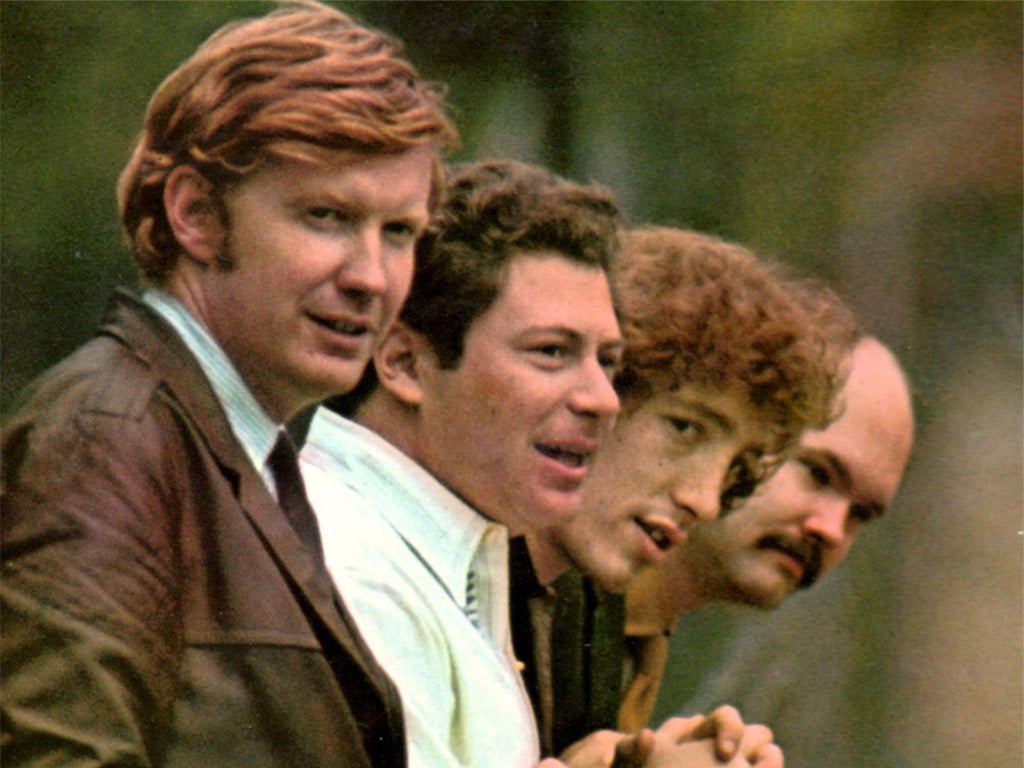Bill Keith: Pioneering banjo player who transformed the approach to his instrument
Keith revolutionised banjo playing, as a performer, propagandist and technician-inventor

Your support helps us to tell the story
From reproductive rights to climate change to Big Tech, The Independent is on the ground when the story is developing. Whether it's investigating the financials of Elon Musk's pro-Trump PAC or producing our latest documentary, 'The A Word', which shines a light on the American women fighting for reproductive rights, we know how important it is to parse out the facts from the messaging.
At such a critical moment in US history, we need reporters on the ground. Your donation allows us to keep sending journalists to speak to both sides of the story.
The Independent is trusted by Americans across the entire political spectrum. And unlike many other quality news outlets, we choose not to lock Americans out of our reporting and analysis with paywalls. We believe quality journalism should be available to everyone, paid for by those who can afford it.
Your support makes all the difference.First among peers in the generation that followed Pete Seeger, Earl Scruggs and Don Reno, Bill Keith revolutionised banjo playing, as a performer, propagandist and technician-inventor. As a stylist, he took the five-string banjo to undreamt-of heights of virtuosity, melodicism and respect. As a multi-instrumentalist, most notably on country's defining instrument, the pedal steel guitar, he extended his reputation as a session musician and band member.
In the process he created a portfolio of work within folk, bluegrass and beyond that included recording and touring with Bill Monroe's Bluegrass Boys, the Jim Kweskin Jug Band and Ian & Sylvia's Great Speckled Bird as well as stints with all-star ensembles such as The Blue Velvet Band, Muleskinner and the loose-knit Woodstock Mountains Revue.
As a session musician he not only supplied sparkle and colour to such works as Richie Havens' Alarm Clock, Maria Muldaur's self-titled solo début, The David Grisman Rounder Record and Peter Rowan's The First Whippoorwill and he also deliciously added banjo shadings to the Bee Gees' concept-album-gone-wrong, Odessa.
A fixture on the US folk scene, he flipped between coasts. "It's funny how it's a small family," Keith told me. "I remember when I lived in Boston and first met Clarence and Roland White. They had come to town to play, and we got together to jam for an afternoon, and who should come wandering into the room but this kid with a missing finger? He came in, stood around and sorta looked at us, listened, and then he played a little banjo." The kid was Jerry Garcia, whose passion for recording bluegrass acts lifted the latch for fans to record Grateful Dead gigs.
Born in Boston in 1939, like his father, and brother Allan, Keith went to Amherst College in Massachusetts. He graduated in 1961 with a major in 18th century French literature. As he recounted in Eric von Schmidt and Jim Rooney's oral history of the Cambridge folk scene, Baby, Let Me Follow You Down (1969), on a noticeboard at Amherst he spotted a five-string banjo for sale. Having already played Dixieland-style tenor banjo with the Merry Morticians and The Sow Seven, he was ripe for change. He absorbed Pete Seeger's best-selling tutor, How to Play the 5-String Banjo, and Flatt and Scruggs' LP, Foggy Mountain Jamboree. By 1959 he was a stalwart of the local, multi-racial folk scene playing hoots (hootenannies), coffee houses, colleges and clubs. In 1962 Prestige Folklore released his and Jim Rooney's career-validating Livin' on the Mountain.
Deeply analytical, he broke down Scruggs' Foggy Mountain Jamboree banjo solos into musical notation and eventually devised ways to go beyond Scruggs' dazzling breaks and runs. "It was the first major development in banjo playing since Earl Scruggs appeared with Monroe in the mid-1940s and Don Reno coalesced a jazz guitar-influenced style in the 1950s," ," wrote Richard D Smith in Can't You Hear Me Calling – The Life of Bill Monroe (2000).
By early 1963 he was a Bluegrass Boy. But as fellow alumnus peter Rowan told me, "Bill Monroe called Bill Keith 'Brad'… 'What's your father's name, son?' He was a very traditional man; he couldn't have two Bills in the band." By late 1963 Keith was out, itchy about appearing on ABC TV's Hootenanny, the show that had banned Pete Seeger.
He went on to become a principal member of several influential bands. The Blue Velvet Band that made Sweet Moments with... was Keith, along with Rooney, the fiddle player Richard Greene, and Eric Weissberg (whose "Dueling Banjos" took on a sinister aspect in the film Deliverance).
The bluegrass supergroup Muleskinner, with Clarence White, mandolinist David Grisman and Rowan, was instantly snapped up after a television appearance. Arguably the finest guitarist the Byrds had ever had, White was killed by a drunk driver in July 1973, shortly after Muleskinner's eponymous album release, dashing hopes for their future.
Keith recorded a number of solo albums, beginning with the phenomenon that was Something Auld, Something Newgrass, Something Borrowed, Something Bluegrass (1976). With Dan Bump, he invented the Keith Tuner, manufactured by Beacon Banjo Company, which enables precision pitch changes on the banjo mid-performance.
William Bradford Keith, musician and inventor: born Boston 20 December 1939; married Claire (two sons); died Bearsville, New York 23 October 2015.
Subscribe to Independent Premium to bookmark this article
Want to bookmark your favourite articles and stories to read or reference later? Start your Independent Premium subscription today.
Join our commenting forum
Join thought-provoking conversations, follow other Independent readers and see their replies
Comments